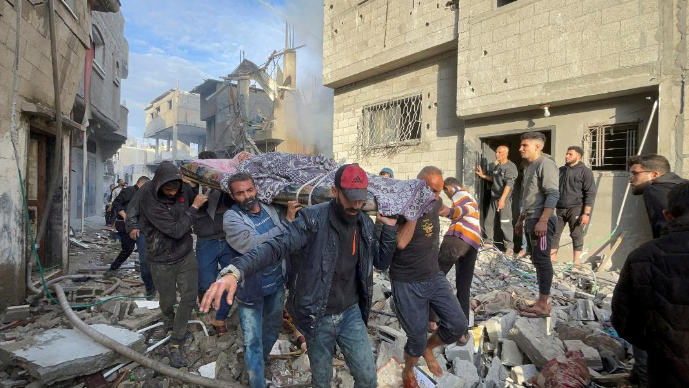Iceland: Volcanic eruption confirms awareness of long magma fault: News

A recent volcanic eruption near the Icelandic port of Grindavik confirms awareness of a long fault from which magma can erupt again almost without warning in the coming years, an expert on the phenomenon explained to AFP.
Volcanic activity appeared to have subsided on Monday, a day after an eruption hit Grindavik, on the Reykjanes peninsula in southwest Iceland, according to Iceland’s civil protection.
This large island in the North Atlantic, which is Europe’s largest and most active volcanic field, overhangs the Mid-Atlantic Ridge. This rift in the sea floor separating the Eurasian and North American tectonic plates is the subject of much attention.
Because the Grindavik eruption is the fifth in three years to affect the Reykjanes peninsula.
“After eight centuries of relative hiatus and complete cessation of surface activity, we have entered a new episode of plate separation that may last several years, perhaps a decade,” says volcanologist Patrick Allard of the Paris Institute of Globe Physics.
Shortly before March 2021 and shortly before the first eruption of this series of five events, “we saw ground deformation, magma rising from the depths and entering the fault,” the scientist continues.
The presence of this large volume of magma near the surface caused a series of eruptions. The last two (last December 18 followed by January 14 near Grindavik), very brief and preceded by little seismic activity, “testify to the fact that the magma is very close to the surface, ready to erupt”.
The thinning of the Earth’s crust will facilitate this “pressure release”, with volumes of magma erupting into the open air that “shouldn’t be massive”.
But the location of the fault is problematic. It threatens the Svartsengi geothermal power plant located in the same area and which provides water and electricity to about 30,000 residents, or around a tenth of the Icelandic population.
Patrick Allard adds that the “uncertainty over the existence of this port city” of Grindavik, “built on the currents of 800 years ago”, raises considerable questions.
with very short warning time before explosion. The last two were thus preceded “by a few hours of a seismic crisis connected with the terminal fracturing of this newly rising magma”.
In addition to the risk of an explosion in the city itself, there is a risk of an underwater explosion with “an explosive event releasing more volcanic ash and fragments”.
Economic but also social impact: 4,000 inhabitants of Grindavik were evacuated in November, which, on the scale of France, is equivalent to evacuating “a town of 700,000 inhabitants”, the volcanologist notes.
Published at 8:39 pm on January 16, AFP





